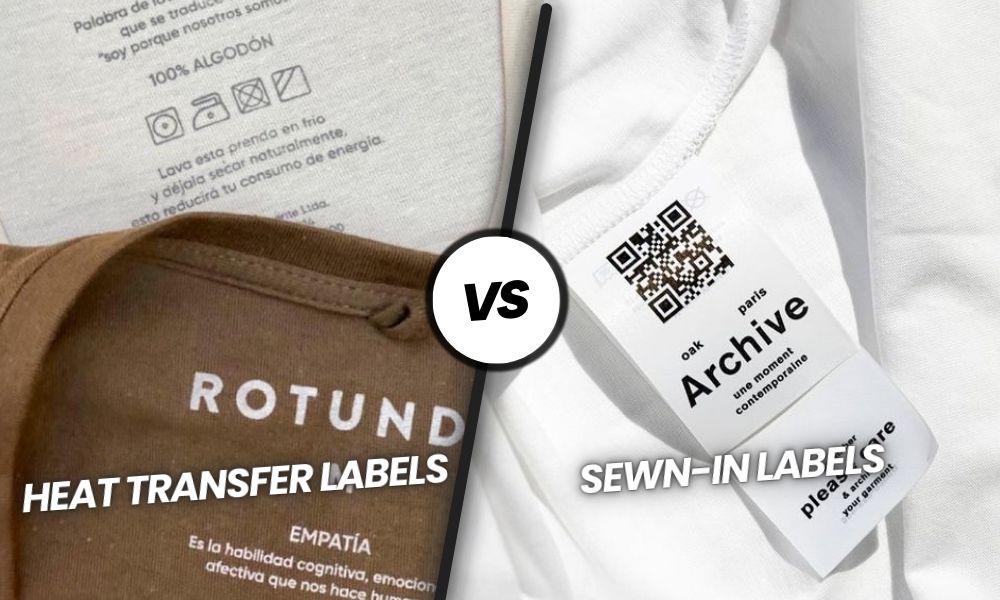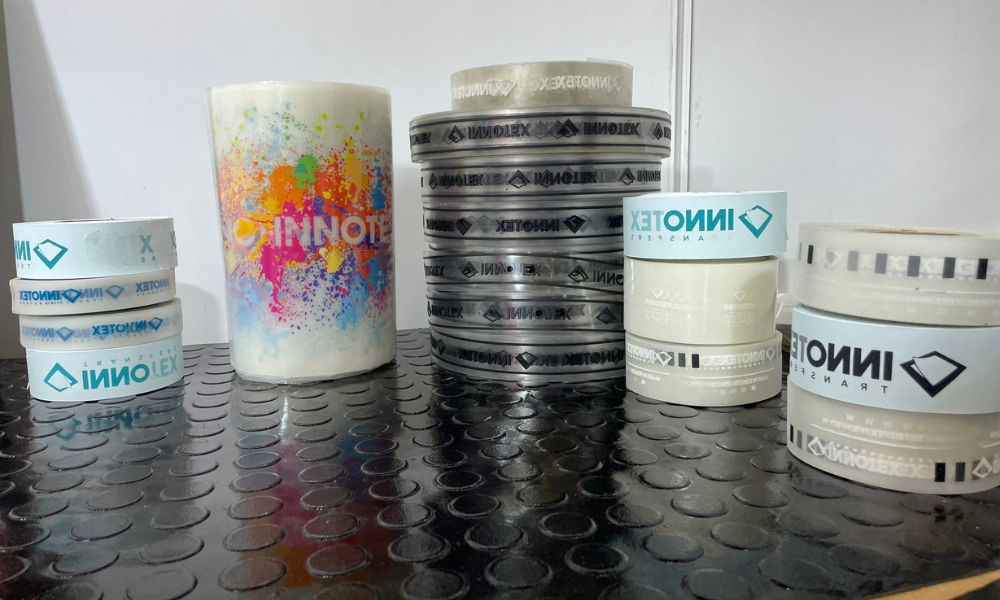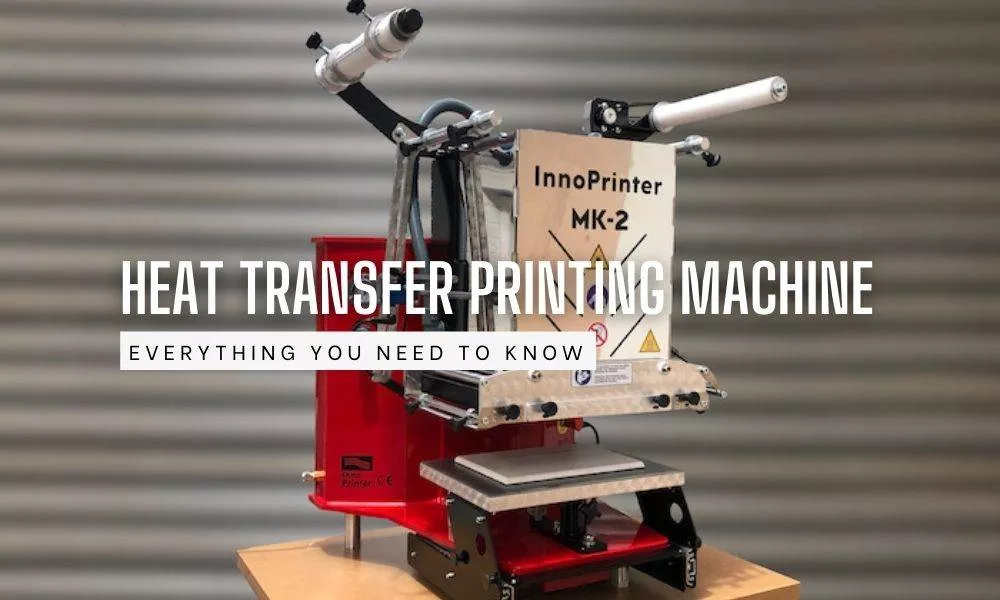If you’re a small business owner or aspiring clothing brand entrepreneur, you understand the importance of creating high-quality garments that stand out in the market. One crucial aspect of garment production is the labeling process. Clothing labels not only provide essential information to consumers but also serve as a branding element for your products. In this comprehensive guide, we will explore the world of heat transfer labels, a popular method for labeling garments, and delve into the benefits, application process, and legal requirements associated with these labels.
Understanding Heat Transfer Labels
Heat transfer labels are a method of applying a printed image directly onto a garment. This process involves fixing the image onto the fabric, resulting in a long-lasting and durable label. These labels are commonly used for customizing t-shirts and other apparel items. Heat transfer labels are particularly favored for their tagless feature, eliminating the irritation caused by traditional sewn-in labels.
Advantages of Heat Transfer Labels
Heat transfer labels offer several advantages over traditional sewn-in labels.

a. Comfort and Durability
One of the key benefits of heat transfer labels is the enhanced comfort they provide. Unlike sewn-in labels, which can be irritating and scratchy, heat transfer labels bond directly with the fabric, making them virtually undetectable when worn. Additionally, heat transfer labels are designed to withstand numerous wash cycles, ensuring the longevity of your garment.
b. Ease of Application
Applying heat transfer labels is a straightforward process that requires minimal skill. With the use of a heat press machine, the label is applied to the garment at a controlled temperature and pressure. This results in a clean and professional finish, saving you time and effort compared to sewing in labels.
c. Versatility in Design
Heat transfer labels offer a wide range of design possibilities. Whether you’re looking to create intricate patterns or bold logos, heat transfer technology allows for detailed and vibrant designs. With the option to print up to four colors, you can bring your creative vision to life.
How Heat Transfer Printing Works
To understand the heat transfer labeling process, let’s take a closer look at the step-by-step procedure:
a. Design and Printing
The first step in heat transfer printing is to create your desired design. This can be done using various printing methods, such as silk screen, flexo, or digital printing. The design is printed onto a special transfer paper or synthetic film that has a release layer, which aids in transferring the image onto the garment.
b. Heat Press Application
Once the design is printed, it is time to apply it to the garment using a heat press machine. The textile substrate is placed on the press, and the printed transfer paper or film is positioned on top, with the inked side in contact with the fabric. The press is set to the recommended temperature and pressure, and the handle is lowered to clamp the heat press shut. An alarm will sound when the designated time has elapsed.
c. Peeling and Cooling
After the designated time, the transfer paper is peeled off, leaving the inked design permanently transferred into the fabric’s fibers. Depending on the type of transfer paper used, some labels should be removed while still warm, while others must be left to cool before peeling off.
d. Setting and Washing
Finally, it is essential to allow the heat transfer labels to be set for 24 hours before washing the garment. This ensures the longevity of the label and prevents any damage during the washing process. Once the labels have set, the garment can be washed and worn with confidence.
Heat Transfer Labels vs. Sewn-In Labels
When it comes to choosing between heat transfer labels and sewn-in labels, several factors come into play. A sewn-in label is sewn into a piece of clothing or other textile product to display information about the item. Let’s explore the key differences between these labeling methods:

| Heat Transfer Labels | Sewn-In Labels | |
| Cost | Cost-effective | Higher cost |
| Application | Quick and easy | Requires sewing skills |
| Comfort | Comfortable to wear | Can be irritating and scratchy |
| Design | Versatile design options | Limited design capabilities |
| Durability | Resistant to wash cycles | Prone to tearing |
Ultimately, the choice between heat transfer labels and sewn-in labels depends on your specific needs and preferences. Heat transfer labels offer a cost-effective and versatile solution, while sewn-in labels provide a more traditional and durable option.
Legal Requirements for Clothing Labels
When selling garments, it is crucial to comply with legal requirements for clothing labels. Failure to meet these requirements can result in legal issues and damage to your brand’s reputation. Here are some key regulations to consider:
a. Textile Care Labeling
In the European Union (EU) and the United Kingdom (UK), clothing labels must adhere to the regulations set by GINETEX, the international association for textile care labeling. GINETEX has trademarked five symbols that represent washing, drying, ironing, bleaching, and professional care instructions. These symbols must be included on clothing labels to ensure proper care and maintenance.
b. Flammability Warning
In the EU and UK, all children’s nightwear must include a flammability warning on the label. Compliance with this rule is essential to ensure the safety of customers, especially children. Failure to include this warning can have severe consequences for your business.
Innotransfers: Your Heat Transfer Label Solution
When it comes to high-quality heat transfer labels, Innotransfers is a leading company specializing in the design and production of innovative textile transfers. Our technology and transfers are perfect for any type of labeling and marking, including denim, underwear, baby clothing, food textiles, hospital clothing, work clothing, uniforms, hotel clothing, orthopedic material, sportswear, and more.
a. Production Capacity and Short Delivery Time

At Innotransfers, we have the production capacity to deliver orders of any size, from small quantities to full-season productions. We pride ourselves on our short delivery time, ensuring that you receive your heat transfer labels promptly.
b. Customization and Quality Assurance
Our innovative technology allows for customization based on your specific requirements. Whether you need roll transfers, unitary transfers, or Eco-Resist transfers, we can provide the perfect solution. Our transfers meet the Oeko TEX Standard 100 norm, guaranteeing their suitability for baby clothes and organic garments.
c. Expertise and Customer Support
With years of experience in the industry, our team of experts is dedicated to providing high-quality service and customer satisfaction. We offer assistance with the design and production of your brand’s neck labels, ensuring that your garments stand out in the market.
Don’t stress about creating your own Heat Transfer labels! Innotransfers is here to make your brand’s neck labels a stand out. With a variety of transfer options at your disposal, we’re eager to assist in finding the perfect fit for your upcoming project.
Ready to witness how our transfers can elevate your brand? Request one of our FREE transfer samples by filling up the form and experiencing the value they bring firsthand!
Conclusion
Heat transfer labels offer a range of benefits for clothing brands, from enhanced comfort to versatile design options. With their ease of application and durability, heat transfer labels are a popular choice in the garment industry. It is crucial to comply with legal requirements for clothing labels to ensure consumer safety and brand reputation. Innotex Transfers is your go-to solution for high-quality heat transfer labels, providing customization, quality assurance, and expert customer support. With Innotransfers by your side, you can confidently label your garments and make a lasting impression in the market.
Bonus Tip: If you need help, we have Everything You Need to Know About Heat Transfer Printing Machines




